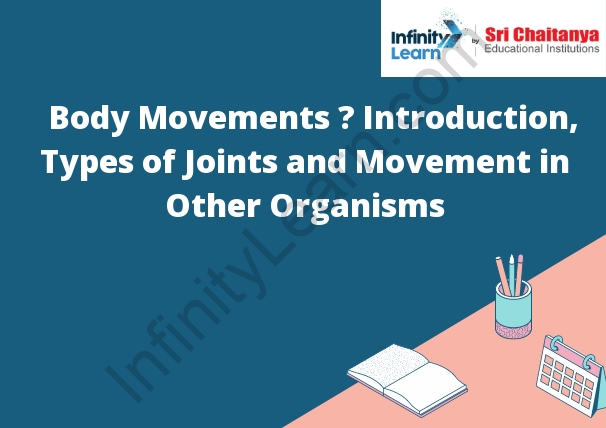Table of Contents
Body Motion
Body Movements – Introduction: Our body movements are controlled by the brain. The brain sends signals to the muscles telling them what to do. Muscles contract and relax to produce the desired movement. The brain is divided into two parts: the cerebrum and the cerebellum. The cerebrum is the largest part of the brain. It is responsible for thinking, learning, and controlling the body’s movements. The cerebellum is responsible for coordination and balance.
Movements are controlled by groups of muscles called muscles groups. Muscles groups are controlled by motor neurons. Motor neurons are controlled by the brain.
There are three types of movement: voluntary, reflex, and instinctive.
- Voluntary movements are controlled by the brain. Reflex movements are controlled by the spinal cord. Instinctive movements are controlled by the brain and the spinal cord.
- Voluntary movements can be controlled consciously or unconsciously. Reflex movements are automatic and cannot be controlled consciously.
- Instinctive movements are automatic and can be controlled consciously or unconsciously.
When you move your body, your muscles contract and relax in a coordinated fashion to produce the desired motion. For example, when you walk, your muscles contract and relax in a coordinated fashion to produce the motion of your legs. This process is controlled by the nervous system, which sends messages to the muscles to tell them when to contract and relax.

Joints
Synovial joints are the most common type of joint in the body. They are found between the bones of the limbs and permit a wide range of movements, including flexion (bending), extension (straightening), abduction (moving away from the body), adduction (moving closer to the body), and rotation. The synovial membrane lines the joint and secretes a lubricating fluid that allows the bones to move smoothly against each other.
Forms of Body Moves
- There are many different types of body moves that can be used in dance. Some of the most common are kicks, turns, and leaps.
- Kicks can be performed with the legs either straight or bent. They can be done in the air or on the ground. Some common kicks include the front kick, the roundhouse kick, and the back kick.
- Turns can be performed either on the spot or traveling around the stage. They can be done using the whole body or just the arms and legs. Common turns include the pirouette, the fouette, and the pivot.
- Leaps can be performed by jumping into the air and landing on one foot. They can be done forward, backward, or to the side. Some common leaps include the pike jump, the tuck jump, and the split jump.
Locomotion
Locomotion is the process of moving from one place to another. Animals use a variety of methods to locomote, including walking, hopping, swimming, and flying.
Motion in Different Organisms
In different organisms, motion can be described in different ways. In unicellular organisms such as prokaryotes and some eukaryotes, motion is often described as a result of Brownian motion. This occurs when the cell is constantly buffeted by the surrounding fluid, and the motion of the cell is a result of the collisions between the cell and the fluid. In multicellular organisms, motion is often described as a result of the cells of the organism interacting with each other. This can occur as a result of muscle contractions, or as a result of the cells of the organism interacting with the external environment.
There are many types of movement in other organisms. One type of movement is called ciliary movement. Ciliary movement is the movement of cilia, which are tiny, hair-like projections on the surface of cells. Cilia are used to move substances around the cell, such as mucus, and to move cells around the body. Another type of movement is called locomotion. Locomotion is the movement of an organism or part of an organism from one place to another. Locomotion can be used for movement in water or on land. Some organisms use a combination of ciliary movement and locomotion to move around. Examples of organisms that use ciliary movement and locomotion include sperm cells and marine animals such as jellyfish and sea anemones.
FAQ’s on Body Movements
What are body movements?
Body movements are the different ways our body parts can change position or location, like when we walk, run, or bend.
What are the 4 body movements?
The four main body movements are bending, stretching, twisting, and turning.
What are the 7 types of human movement?
The seven types of human movement include flexion, extension, abduction, adduction, rotation, circumduction, and supination/pronation.
What are the 3 main movements?
The three main movements are flexion (bending), extension (stretching), and rotation (twisting).
What are the 6 body movements?
The six body movements are flexion (bending), extension (stretching), abduction (moving away from the body's center), adduction (moving toward the body's center), rotation (twisting), and circumduction (making circular motions).








